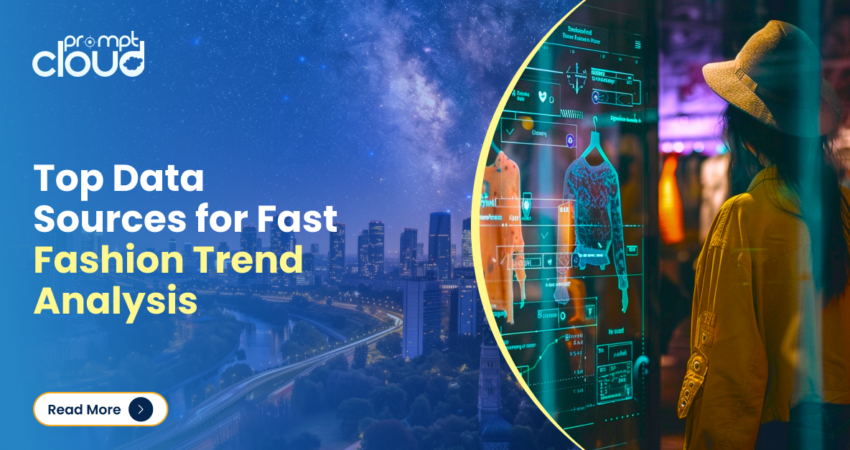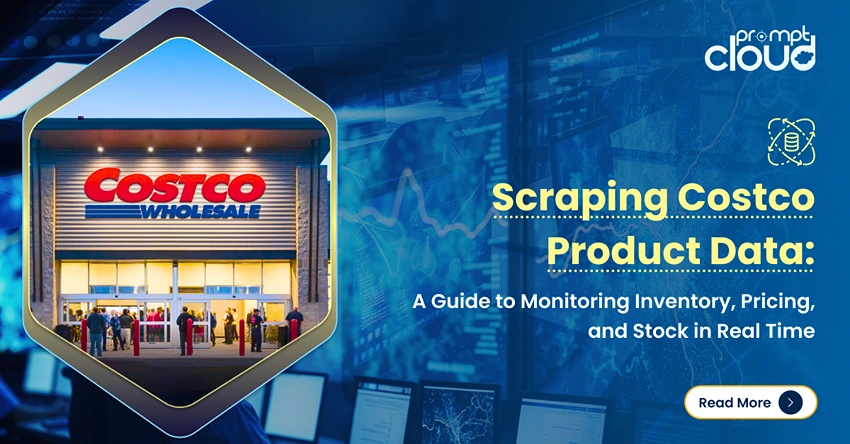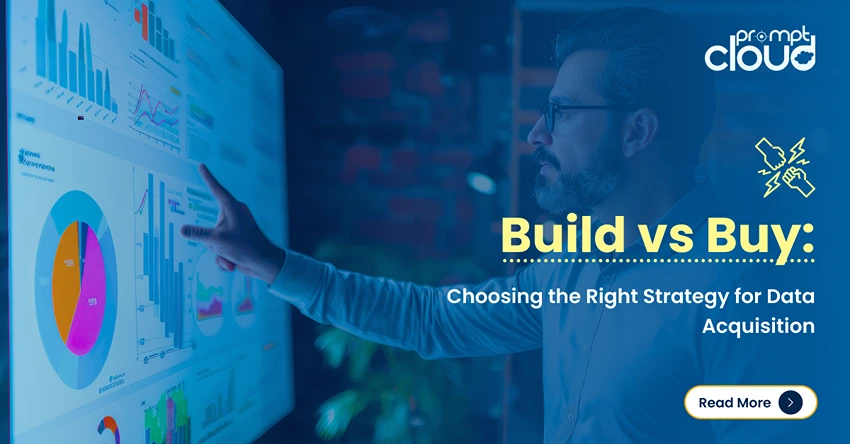
Fast fashion is a dynamic and fast-paced industry where trends can emerge, peak, and fade in the blink of an eye. For brands, retailers, and supply chain managers in this sector, keeping a pulse on evolving consumer preferences and market trends is paramount. The secret to staying ahead lies in leveraging reliable data sources and technologies that enable rapid analysis and actionable insights. In this article, we’ll delve into the top data sources for fast fashion trend analysis, explore their significance, and highlight how web scraping solutions like those offered by PromptCloud empower businesses to harness fast fashion data effectively.
Why Fast Fashion Needs Data-Driven Insights?
Source: raresfin.medium
The success of fast fashion hinges on speed – bringing runway-inspired designs to stores in weeks rather than months. This accelerated timeline leaves no room for guesswork. Brands must anticipate customer demands accurately and respond promptly to shifting preferences. Fast fashion data becomes a crucial asset for businesses looking to identify trending designs, monitor competitor strategies, and streamline production processes.
When businesses incorporate diverse data sources, they unlock the ability to:
- Spot emerging fashion trends before competitors.
- Optimize inventory management by predicting demand.
- Ensure better alignment between supply and consumer demand.
- Enhance customer satisfaction with personalized offerings.
Top Data Sources for Fast Fashion Trend Analysis
Let’s dive into the most effective sources of fast fashion data and how businesses can leverage them for actionable insights.
1. Social Media Platforms
Social media platforms like Instagram, TikTok, and Pinterest are trend incubators where influencers, brands, and consumers showcase and discover new styles. Monitoring hashtags, viral posts, and user-generated content provides valuable insights into what’s gaining traction.
For example:
- Instagram’s #OOTD (Outfit of the Day) posts reveal what consumers are wearing and how trends are being adopted.
- TikTok challenges often center around specific aesthetics or fashion items, signaling growing interest.
By scraping social media data, businesses can track the performance of specific styles, identify influencers driving trends, and adapt designs to align with popular aesthetics. PromptCloud’s web scraping solutions can gather this data efficiently, ensuring businesses stay ahead of viral trends.
2. E-Commerce Platforms
Fast fashion brands must monitor online retailers and marketplaces like ASOS, SHEIN, and Zara to understand product performance and pricing strategies. E-commerce platforms provide fast fashion data that includes:
- Popular categories and styles based on best-sellers.
- Pricing patterns and promotional strategies.
- Customer reviews and ratings that indicate product satisfaction or areas of improvement.
Analyzing this data offers a competitive edge, helping businesses refine their product offerings, develop competitive pricing models, and understand what drives conversions.
3. Search Engine Trends
Google Trends and similar tools provide a treasure trove of insights into consumer interest and search behavior. For instance, a spike in searches for “cropped jackets” or “90s-inspired fashion” might indicate growing demand.
Search engine data allows brands to:
- Predict emerging trends based on keyword popularity.
- Identify regional variations in fashion preferences.
- Create targeted marketing campaigns that align with trending keywords.
When combined with other fast fashion data sources, search trends provide a holistic view of consumer intent.
4. Runway and Fashion Week Coverage
Fast fashion thrives on translating runway styles into affordable, mass-market designs. Monitoring fashion week coverage – whether through official reports, blogs, or influencer commentary provides early signals about upcoming trends.
Fashion weeks in New York, Milan, Paris, and London often dictate the colors, patterns, and silhouettes that dominate the following seasons. By analyzing this data, fast fashion brands can adapt their designs quickly, ensuring they stay relevant.
5. User Reviews and Feedback
Customer reviews on e-commerce platforms, forums, and brand websites are goldmines for actionable insights. Feedback often highlights:
- Popular products or design elements.
- Fit or quality issues that need to be addressed.
- Unmet needs or desires, such as requests for specific sizes or color options.
Web scraping tools can aggregate and analyze this feedback at scale, enabling businesses to identify areas for improvement and align offerings with customer expectations.
6. Retailer Data and Inventory Trends
Monitoring physical and digital inventory data provides insights into what’s selling and what’s stagnating. For example:
- Frequent stockouts may indicate high demand for a particular item.
- Discounted or heavily promoted items could signal oversupply or lack of interest.
Brands can adjust their production and distribution strategies by integrating inventory data with fast fashion data sources like social media and search trends.
7. Sustainability Reports and Consumer Sentiment
As sustainability becomes a growing concern in the fast fashion industry, data on consumer sentiment and environmental impact is increasingly valuable. Brands can monitor:
- Sentiments expressed on social media or forums regarding sustainable practices.
- Competitor sustainability efforts and their reception.
Incorporating sustainability into trend analysis not only appeals to eco-conscious consumers but also ensures long-term business viability.
How Web Scraping Powers Fast Fashion Data Collection?
Collecting fast fashion data from diverse sources like social media, e-commerce platforms, and search engines can be challenging. The volume of information is vast, and manual data gathering is neither efficient nor scalable. This is where web scraping comes in.
Web scraping automates the extraction of data from multiple online sources, enabling businesses to analyze trends in real-time. Here’s how PromptCloud supports the fast fashion industry:
- Custom Solutions: Tailored web scraping services that adapt to unique business needs.
- Scalability: Handle large datasets across multiple sources with ease.
- Compliance: Ethical and compliant scraping practices ensure data privacy and adherence to legal standards.
By leveraging PromptCloud’s capabilities, businesses can integrate fast fashion data seamlessly into their analytics workflows, driving informed decision-making.
Overcoming Challenges in Analyzing Fast Fashion Data
While fast fashion data is invaluable, extracting and analyzing it comes with challenges:
- Data Overload: The sheer volume of information can be overwhelming. Businesses need robust tools and strategies to filter relevant data.
- Timeliness: Trends in fast fashion change rapidly, so outdated data is ineffective. Real-time scraping ensures insights remain actionable.
- Regulatory Compliance: Data privacy laws like GDPR must be adhered to, especially when collecting consumer data.
By partnering with a reliable data solutions provider like PromptCloud, businesses can overcome these challenges and focus on extracting meaningful insights.
How Data Will Shape the Future of Fast Fashion Industry?
As the fast fashion industry evolves, so will the role of data. Emerging technologies like AI and machine learning are set to enhance trend analysis further. Predictive models will forecast demand with greater accuracy, while real-time analytics will enable instantaneous decision-making.
Sustainability will also play a larger role, with businesses using data to optimize supply chains, reduce waste, and meet consumer expectations for ethical practices.
Conclusion
In the fast fashion industry, staying ahead of trends isn’t just an advantage – it’s a necessity. By tapping into diverse data sources and leveraging advanced technologies like web scraping, businesses can gain deep insights into consumer behavior, emerging styles, and market dynamics.
PromptCloud’s tailored web scraping solutions provide the tools needed to collect, process, and analyze fast fashion data effectively. As the industry continues to evolve, data-driven decision-making will remain the key to success, ensuring brands can adapt to change, meet demand, and thrive in a competitive market. Get in touch with us at sales@promptcloud.com



















